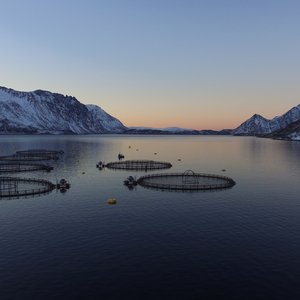Funded by a National Oceanic and Atmospheric Administration National Sea Grant award and an NOAA Saltonstall-Kennedy grant, the study was conducted by a team of researchers from Oregon State University (OSU).
The research, which was meant to identify which types of bacteria could be useful to fight pathogens in oyster production, developed a new treatment based on a one-time application of probiotics. The probiotics, which were dispensed to early-stage larvae, significantly increased their survival. Since, the probiotics also boosted growth, metamorphosis and seed settlement, according to the researchers, the new treatment could be groundbreaking for companies that operate in oyster production, according to the researchers.
To carry out the study, OSU’s researchers grew several strains of naturally occurring bacteria and screened them in vitro for their ability to fight against Vibrio coralliilyticus. The strains that were selected were used to perform the challenge against the pathogenic bacteria in 24 hours old larvae. The larvae were treated with the different strains of cultivated probiotics, first individually and then in combinations with the most promising strains. At 48 hours old, the larvae were challenged by exposing them to V. coralliilyticus.
Compared with the untreated control group, four of the individual probiotic strains resulted in an average increased survival rate of 68% or better, including one strain that increased survival by 99.7%. Researchers then treated larvae with combinations of the most promising individual strains. Different two- and three-strain combinations increased larval survival rates by up to 86%.
Fourteen to 16 days later, the probiotics appeared to still have an effect, with treated larvae displaying significantly higher rates of natural settlement and metamorphosis into adolescent oyster spat, along with significantly larger shells than the untreated larvae produced.
In oyster hatcheries, antibiotics are not allowed so the new probiotics treatment developed at OSU can fight against pathogenic bacteria that can kill off a whole season’s worth of larvae and cause hundreds of thousands of dollars at a time.
“The results exceeded our expectations,” said Carla Schubiger, project leader and co-author of the study. “Just a 40-50% improvement in larvae survival would be huge, but here we have over 80% increased survival at times. That’s very, very significant for the industry. hatcheries so this will be the first tool they can use to increase their production.”
“Vibrio coralliilyticus is a pathogenic bacterium very common in marine aquaculture so oyster farms need a cost-effective way to defend against it. The exact mechanism that aided the oysters is unknown, but the improved growth and settlement rates were an unexpected perk on top of the improved survival rates. It’s possible that we influenced something very early in their development, like the immune response, to make them do better later in life,” Schubiger said.
The research team is developing the probiotic treatment as freeze-dried material that can be sprinkled into the larvae spawning bucket. Treating the larvae so early in their life cycle means they only need a very small amount of material, making the probiotic treatment more cost-effective.
Their next steps will be to test a combination with a fourth probiotic and to work on growing the probiotic bacteria alongside the microalgae that serve as oyster larvae’s initial food source, to integrate the treatment into the spawning process from the very beginning.
Advertisement













